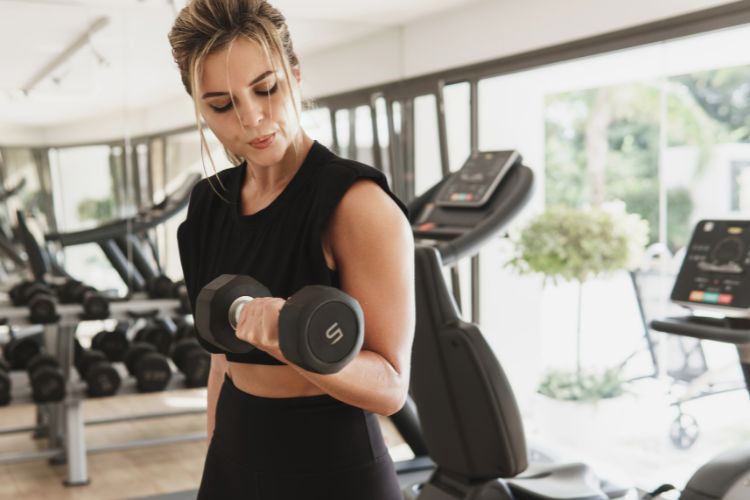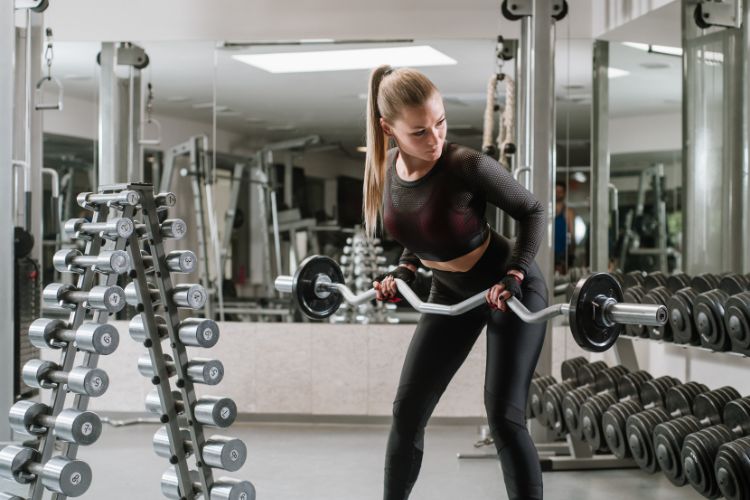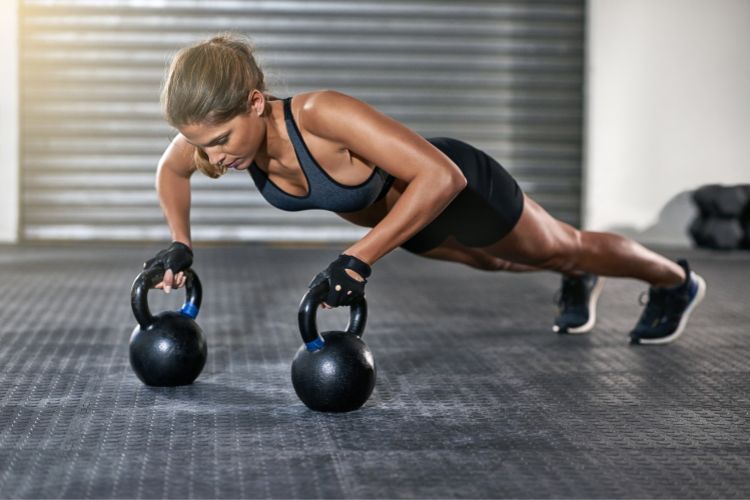Sign up for workout ideas, training advice, reviews of the latest gear and more.






For many women, back acne, colloquially known as ‘bacne’, is an unwelcome visitor that brings discomfort, embarrassment, and distress. Back acne is not limited by age or ethnicity, and can occur at any stage of a female’s life, particularly during puberty and adulthood. Understanding what causes back acne is the first step to tackling this persistent issue. Let’s delve deeper into the various causes and reasons behind acne in females and how to manage it effectively.
Hormonal fluctuations are one of the most common causes of back acne in some females. The surge of hormones, especially during puberty, menstruation, pregnancy, and menopause, can lead to an increased production of sebum, an oily substance secreted by the skin’s sebaceous glands. This excess sebum, combined with dead skin cells, can clog pores, leading to the formation of acne.
Stress plays a significant role in the appearance of acne. When a woman experiences stress, her body responds by producing more cortisol, known as the stress hormone. This increased cortisol can stimulate the sebaceous glands to produce more oil, contributing to acne development.
Back acne can also be hereditary. If a close family member, like a parent or sibling, has had issues with back acne, you might be genetically predisposed to it as well. While you can’t change your genes, understanding your genetic propensity can help you take preventive measures when it comes to what causes back acne in some females
Poor hygiene, combined with excessive sweating, can cause back acne. When sweat mixes with sebum and dead skin cells, it can block your pores, leading to the formation of pimples. This is particularly noticeable during hot weather or intense physical activity. Always remember to shower immediately after exercising and change into fresh, clean clothes.
Your diet can also impact your skin health. Consuming high-glycemic foods, such as sugary snacks and drinks, white bread, and pasta, can trigger an insulin spike, promoting sebum production and inflammation. On the other hand, dairy products may also contribute to the causes of back acne in females due to the presence of hormones and bioactive molecules.
Some cosmetic and hair products contain pore-clogging ingredients, often referred to as comedogenic. These ingredients can cause buildup on your skin and hair, which can lead to clogged pores and back acne. If you’re prone to acne, opt for non-comedogenic products designed not to block pores.
The friction and pressure caused by tight clothing, heavy backpacks, or even constantly leaning back in your chair, can irritate your skin, causing it to become inflamed and potentially leading to acne. This condition, known as acne mechanica, is often overlooked but can be a significant causes to back acne in females.
Understanding the root cause of your back acne can help you to manage it more effectively. While some factors, like genetics and hormonal changes, might be out of your control, there are measures you can take to mitigate their effects.
Maintaining good hygiene, managing stress, and maintaining a healthy diet can significantly help. Look for skincare products that are labeled as ‘non-comedogenic’ or ‘oil-free.’ Use a gentle, fragrance-free body wash, and exfoliate your skin regularly to remove dead skin cells.
If your acne is persistent or causing significant distress, it may be worth seeing a dermatologist. They can provide personalized treatment plans that may include topical creams, oral medications, or even hormonal therapies.
In conclusion, the causes of back acne in females can be attributed to a variety of factors ranging from hormonal changes to diet, stress and lifestyle choices. It’s crucial to understand that dealing with back acne is not just about topical treatments but also involves holistic lifestyle adjustments.
Limiting your consumption of high-glycemic foods and dairy may help reduce acne outbreaks. Incorporate more fresh fruits, vegetables, lean proteins, and whole grains into your meals. These foods are rich in antioxidants and anti-inflammatory properties that can promote healthier skin.
Prolonged stress can disrupt your hormone balance and causes back acne in females. Engage in stress-relieving activities such as yoga, meditation, walking, or even reading a good book. Getting adequate sleep also plays a vital role in stress management and overall skin health.
Opt for loose, breathable fabrics like cotton or linen, particularly during the summer or while exercising, to allow your skin to breathe and sweat to evaporate. Similarly, consider switching to a lighter backpack or switching sides frequently if you carry a heavy bag around.
Lastly, maintain a consistent skincare routine.
Cleanse your back daily with a mild, non-comedogenic cleanser. Consider using a long-handled brush to reach the entire area. Exfoliate your skin once a week to remove dead skin cells, but be careful not to overdo it as it can irritate the skin and exacerbate acne. Use a light, oil-free moisturizer to keep your skin hydrated.
Remember, it’s essential to treat your skin gently. Scrubbing too hard can irritate acne-prone skin and cause further inflammation and breakouts. Always pat your skin dry instead of rubbing to prevent irritation that will causes back acne in females.
If your back acne persists despite these lifestyle adjustments, consult a dermatologist. They might recommend treatments like topical retinoids, antibiotics, hormonal treatments like oral contraceptives (for women), or even procedures like chemical peels or light therapy, depending on the severity of your acne and your medical history.
In the journey of dealing with back acne, patience is key. Changes in your skin take time. Remember to be gentle with yourself and your skin; over time, with consistent care, you can improve your skin’s health and appearance.
Back acne in females can causes a nuisance, but with the right knowledge and tools, it is manageable. By understanding the causes and implementing lifestyle changes, you can take control and embark on a path to clearer, healthier skin.
Stay up to date on the latest women’s health, fitness and lifestyle trends and tips.